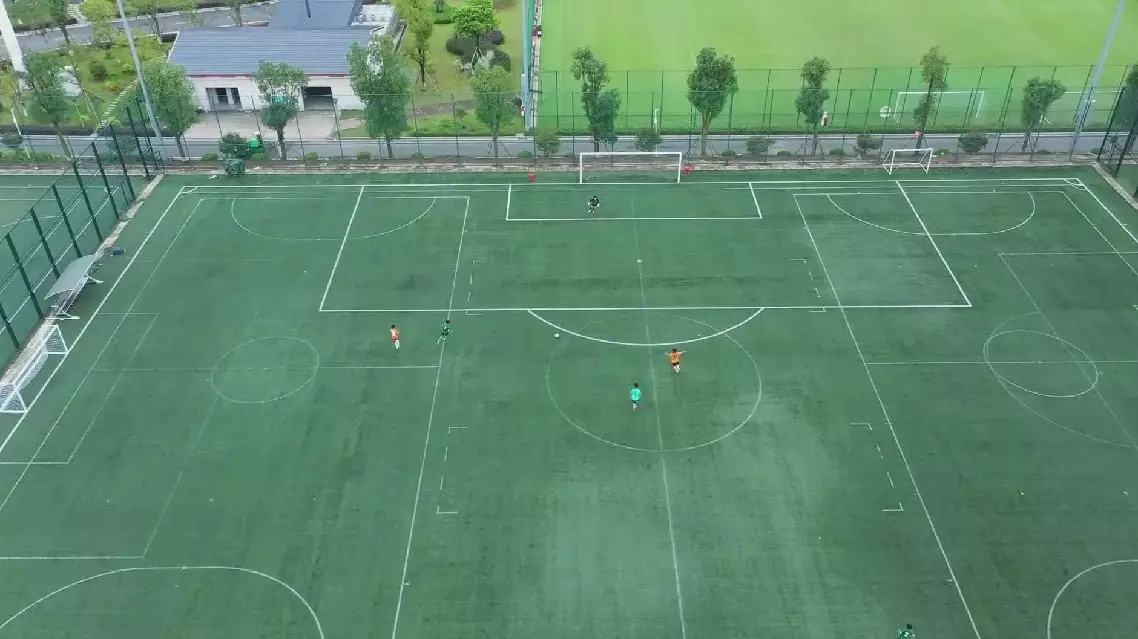Archaeologists at the legendary Sanxingdui Ruins site have uncovered a jade and stone artifact processing site dating back over 3,400 years, marking significant progress in the excavation of Sanxingdui in southwest China's Sichuan Province, the provincial cultural relics and archaeology research institute said on Tuesday.
Located about one kilometer north of the previously unearthed sacrificial pits, the jade and stone production workshop revealed a wide array of artifacts such as raw jade and stone materials, waste materials, fragments and finished pieces, suggesting a relatively complete chain of handicrafts.
The discovery of the workshop sheds light on several mysteries, including the origins of the large quantities of jade and stone raw materials found at Sanxingdui, the techniques used in their crafting, the production processes, and the distribution methods involved.
Originally discovered in the late 1920s, the Sanxingdui Ruins have been dubbed as one of the world's greatest archaeological findings of the 20th century.
Located in the city of Guanghan, around 60 kilometers from the provincial capital Chengdu, the ruins covering an area of 12 square kilometers are believed to be the remnants of the Shu Kingdom, dating back some 4,500 to 3,000 years.
To date, more than 60,000 cultural relics have been unearthed at Sanxingdui.

Over 3,400-year-old jade, stone "workshop" discovered at China's Sanxingdui Ruins
A growing interest in sports is changing lives in the less-populated parts of east China's Jiangxi Province, where world-class training facilities are keeping residents active, churning out skilled athletes and even attracting sports tourism. In the lakeside Wuning County, around 200 tennis courts are spread across towns, streets, and schools, attracting swaths of new players in this county of less than 200,000 residents. This success is largely due to the efforts of Tang Guanghua, a tennis coach. ""I returned home in 2017, and I feel fortunate that tennis changed my life. I want to create opportunities for more children who love tennis in my hometown," said Tang. Numerous athletes and coaches have come to Wuning on Tang's recommendation, while local authorities have supported the development of tennis in the area. Last year, Wuning established its first comprehensive tennis base and was designated a national "Tennis Demonstration County," attracting more international competitions. In Dingnan County, fierce football competitions are thriving. As the largest football training center in South China, Dingnan has 20 middle and high schools recognized as national schools with a focus on football. It boasts 2.05 standard football fields for every 10,000 people, surpassing the national average. In the 2024 Gothia Cup, a team from Dingxi County, with an average age of just 12, triumphed over the host team after competing against 1,900 teams. "Dingxi County is surrounded by mountains and faces a shortage of demographic advantages, with industrial development being limited. By promoting school football, we've seen significant improvements in our students' mental and physical health. Additionally, the football industry now serves as a platform for the high-quality development of Dingxi's economy and society," said Ye Shengning, director of the Service Center for Football Integrated Development. In Quannan County, the sport of rock climbing is flourishing. In 2020, local authorities supported the construction of a high-quality climbing town, providing training venues for coaches and athletes and boosting the local cultural tourism industry. "Quannan County has advanced the model of 'climbing-plus-tourism.' The climbing town has been rated a 4A scenic spot and has become a key destination for the climbing tourism industry in the Guangdong-Hong Kong-Macao Greater Bay Area," said Huang Huiming, director of the Cultural and Tourism Bureau in Dingnan County. China keeps a national scenic area rating system, with areas ranked between 1A and 5A based on criteria including natural beauty, cultural significance and visitor services. Last year, over 7.23 million tourists visited Dingnan, generating revenue of 6.445 billion yuan (approximately 915 million U.S. dollars), marking a year-on-year increase of 29.22 percent.

Small towns in east China emerge as hidden source of athletic excellence










